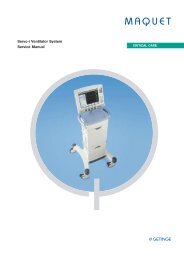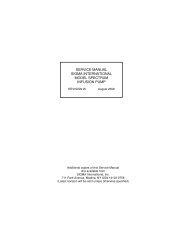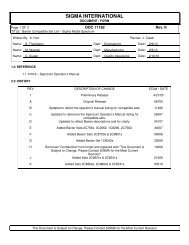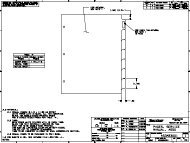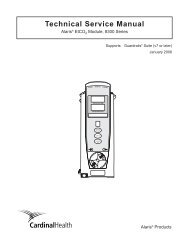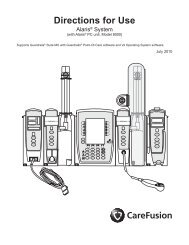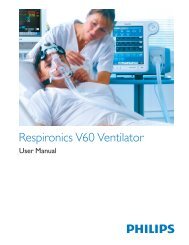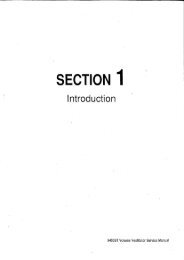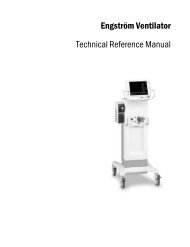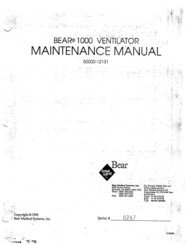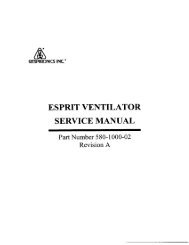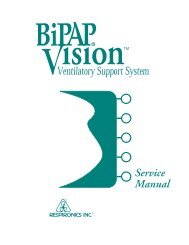Operator's Manual-AVEA - Static Content
Operator's Manual-AVEA - Static Content
Operator's Manual-AVEA - Static Content
You also want an ePaper? Increase the reach of your titles
YUMPU automatically turns print PDFs into web optimized ePapers that Google loves.
Service <strong>Manual</strong> 31<br />
WARNINGS<br />
The following warnings must be read and understood before performing the<br />
procedures described in this section.<br />
• Under no circumstances should this medical device be operated in the presence<br />
of flammable anesthetics or other volatile materials due to a possible explosion<br />
hazard.<br />
• Liquid spilled or dripped into the unit may cause damage to the unit or result in<br />
an electrical shock hazard.<br />
• Oxygen vigorously accelerates combustion. To avoid violent ignition, do not use<br />
any gauges, valves, or other equipment that has been exposed to oil or grease<br />
contamination.<br />
• Do not release this medical device if any alarm/alert function is inoperative. To do<br />
so could result in a malfunction without warning, possibly resulting in personal<br />
injury, including death or property damage. Refer the unit to a Allied Healthcare<br />
Authorized Service Technician or a Allied Healthcare Trained Hospital Service<br />
Technician.<br />
• All tubing and fittings used to connect high pressure gas (air and oxygen) from<br />
the source to the test equipment and from the test equipment to the device being<br />
tested must be capable of withstanding a minimum supply pressure of 100 psi<br />
(7.03 kg/cm2). The use of tubing and fittings not capable of withstanding this<br />
pressure could cause the tubing to rupture, resulting in personal injury or<br />
property damage.<br />
• When verifying the operation of this medical device, do not breathe directly from<br />
the machine. Always use a fresh bacterial filter and test circuit. A hazard to the<br />
health of the service person may result.<br />
• If any of the following procedures cannot be verified as outlined in this document,<br />
do not use this device on a patient and refer it to Allied Healthcare or a Allied<br />
Healthcare Authorized Service Facility or a Allied Healthcare Trained Hospital<br />
Service Technician.<br />
CAUTIONS<br />
• Do not sterilize the ventilator. The internal materials are not compatible with<br />
sterilization techniques.<br />
• Do not use MEK or Trichloroethylene, as damage to surface may result. Do not<br />
allow any liquid to spill or drip into the ventilator.<br />
• Circuit boards are subject to damage by static electricity. Do not touch<br />
components, circuit, or connector fingers with hands. Handle only by edges.<br />
Before using any test equipment [electronic or pneumatic] for calibration procedures<br />
[other than operational verification], the accuracy of the instruments must be verified<br />
by a testing laboratory. The laboratory master test instruments must be traceable to<br />
the NIST (National Institute of Standards Technology) or equivalent. When variances<br />
exist between the indicated and actual values, the calibration curves [provided for<br />
each instrument by the testing laboratory] must be used to establish the actual<br />
L2342 Revision B November 2004




